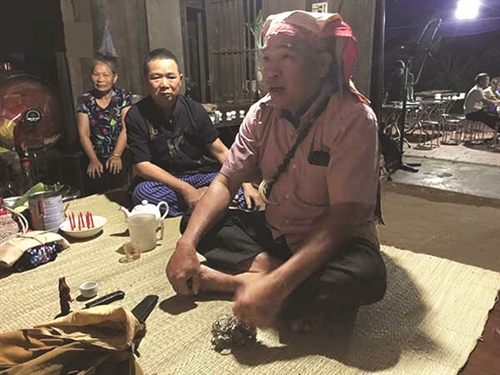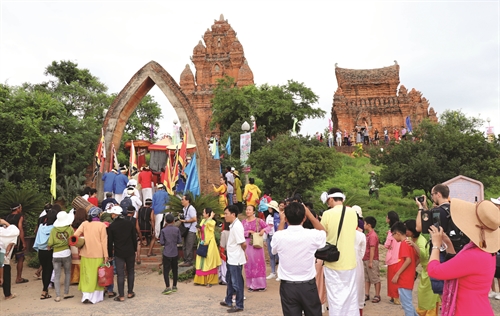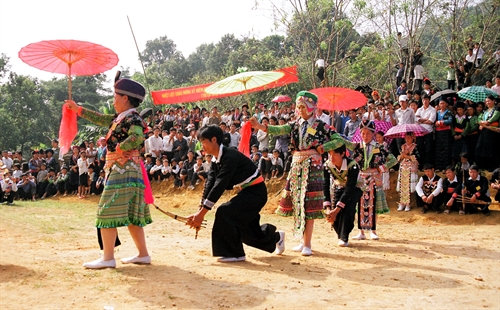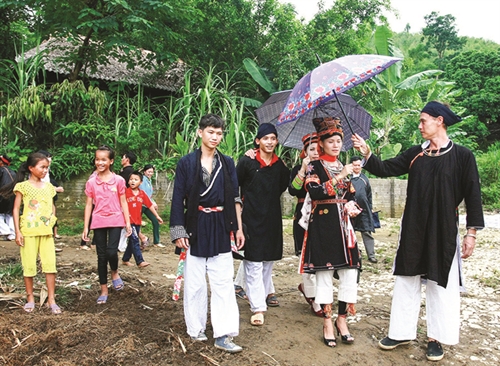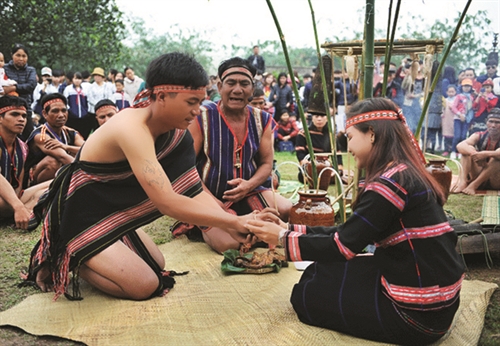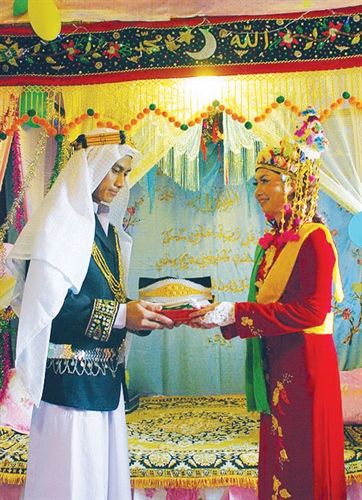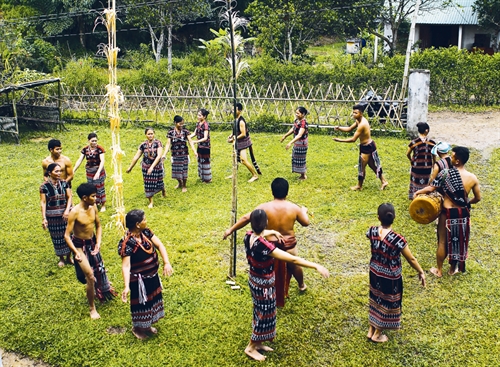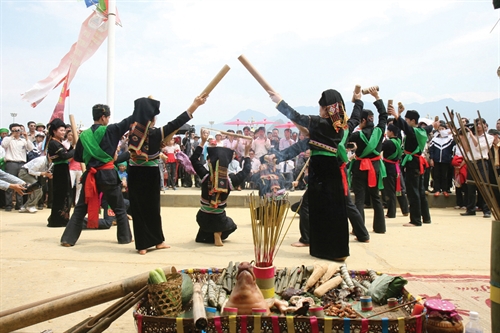>>Conventions and practices of "Muong" ethnic minority
>>Cultural traits of the Muong
Ta Thi Tam
Ethnology Institute
Sac bua, also called sac pua, sec bua or sec coong, is a unique folklore ritual in which a band visits families in the village from the first through the seventh days of the lunar new year, playing gongs and singing songs to wish a new year of good health, prosperity and peace to the hosts. A sac bua band consists of 12 performers who can both play gongs and sing well. The band is led by thay thuong, the best singer. Preparations for this rite are made weeks before Tet, the lunar new year festival.
Central to this festival are gongs, the original music instrument attached to the life of every Muong from his birth to his death. A sac bua band usually has 12 gongs of various sizes which symbolize 12 months of the year as well as 12 animal designations. This number includes four chieng giam (low-pitch big gongs played by the most skillful performers), four chieng bong (medium-pitch gongs one of which is played by thay thuong) and four chieng tlé (high-pitch small gongs).
Sac bua performers must prepare their costumes carefully. A sac bua woman wears a green or red bodice, a button less white or light-color short blouse together with a black coat, a black skirt with embroidered patterns of dragon, coin or lozenge shapes and a white headdress tied at her nape. A man wears a light-color short shirt and a black coat, white trousers and a colorful bandanna.
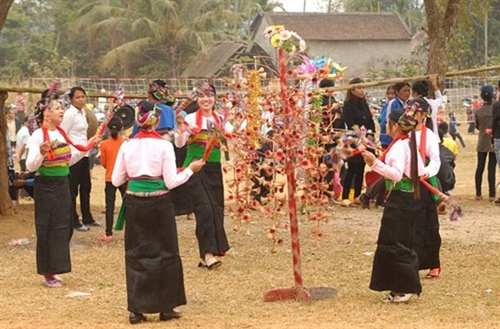 |
| Sac bua, which means playing gong, is a traditional new year festival of the Muong__Photo: Internet |
Before going around the village, sac bua band members gather at the family where their gongs are kept. This family must be prestigious in the village or known for its gong playing tradition. From this family, the band departs at a chosen hour in the morning of the first day of the lunar new year. Led by thay thuong, band members carry chieng giam, chieng bong and chieng tlé in their hands. The band is accompanied by two men who carry a big basket to receive gifts from villagers.
Before departing, thay thuong sings a prelude to announce the band’s performing trip. Band members then play the gongs and concurrently sing songs as led by thay thuong to start their journey. Sac bua band usually plans families it will visit. Arriving at a family, thay thuong beats the gong to inform the family of the band’s coming. The band then advances to the house and gathers under the stairs. Thay thuong stands near the rice mortar at the foot of the stairs while band members walk from the right to left of thay thuong to form a circle around him.
Thay thuong then asks band members to beat the gongs six times for him to sing compliments to the host. These compliments, which are wishes for prosperity and peace, are sung creatively depending on the situation of the visited family. After the band’s performance, the host may invite the band to come inside if he likes the performance. If not, he will give a basket of paddy to thay thuong who then gives it to the men accompanying the band. Thay thuong sings a thank you song expressing the band’s gratitude, wishing for riches to the family and promising to visit the family next year. After that, the band leaves for another family.
A host who wishes to invite the band to stay will bring a tray of food at the stairs, asking thay thuong and his band to sing. The tray contains a bottle of wine, some cups, two bowls of rice stuck with four incenses, and two plates of betel and areca. Appreciating the host’s generosity, thay thuong sings a thank you song and praises the family’s prosperity.
After thay thuong’s singing, the host, standing at the stairs, will sing in return, thanking for compliments and wishes of sac bua band. Then comes a responsive singing between family members and the band, which is the most exciting part of the performance, with many riddles and creatively responsive words. If sac bua band fails to solve the host’s riddles, it has to leave without being offered food by the host. If yes, it is invited to have a meal and drink ruou can (rice wine drunk out from a jar with stalks). Before leaving for another family, thay thuong again sings wishes for good health and longevity to the host and his loved ones.
Sac bua festival is an agricultural ritual showing not only the Muong’s desire for a prosperous and peaceful life but also their art performing talent.-
